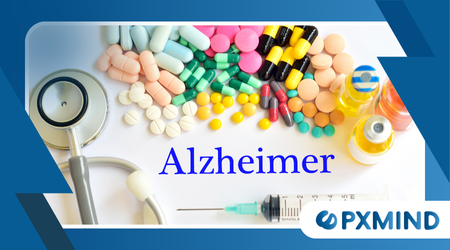How Neuroinflammation Contributes to Alzheimer’s & Parkinson’s

Neuroinflammation Contributes to Alzheimer’s & Parkinson’s, representing a critical, often misunderstood, driver of pathology.
Anúncios
In the complex landscape of neurodegenerative diseases, a clear villain emerges.
This internal, smoldering fire significantly accelerates the cognitive decline and motor dysfunction characteristic of these devastating conditions.
Understanding this mechanism is the future of treatment.
The Inflammatory Cascade in Neurodegeneration
The brain, once thought to be an “immune-privileged” sanctuary, harbors its own defense system. Microglia, the resident immune cells, typically police the central nervous system.
Their activation is generally beneficial, clearing cellular debris and pathogens. However, chronic activation proves destructive, not protective.
This persistent activation shifts microglia into a pro-inflammatory state. They then release a barrage of toxic molecules, including cytokines and chemokines.
These inflammatory mediators damage nearby neurons. This process creates a self-perpetuating cycle of damage and more inflammation.
The resulting damage is not a gentle fading; it is aggressive. It actively interferes with synaptic function, the critical communication between neurons.
Over time, this chronic inflammation dictates the speed of disease progression.
Microglia and Amyloid-Beta Neuroinflammation Contributes to Alzheimer’s & Parkinson’s
In Alzheimer’s disease, neuroinflammation is deeply interwoven with the core pathology. The accumulation of amyloid-beta plaques is a primary trigger.
Microglia attempt to clear these plaques but often fail, becoming overwhelmed.
When microglia struggle with the sticky amyloid-beta, they sustain activation.
This sustained inflammatory response then impedes their ability to clear the debris effectively. It is a vicious loop that fuels the disease’s acceleration.
Simultaneously, the inflammation contributes to the hyperphosphorylation of tau protein.
Tau is essential for stabilizing microtubules, but when altered, it forms neurofibrillary tangles. The inflammatory environment encourages this toxic transformation.
Read more: How the New Brain Map Is Transforming Our Understanding of Decision-Making
Imagine a city’s sanitation workers (microglia) trying to clean up a catastrophic oil spill (amyloid-beta).
If the spill is too vast and toxic, the workers get sick, stop cleaning, and their failed efforts only spread the contamination further. This analogy describes the microglial failure.

Parkinson’s Disease: α-Synuclein and Sustained Response
Parkinson’s disease, primarily a movement disorder, also involves significant neuroinflammation.
Here, the misfolded α-synuclein protein, which forms Lewy bodies, is the key irritant. These aggregates build up, particularly in the substantia nigra.
The inflammation in Parkinson’s is centered on the loss of dopaminergic neurons.
Microglial activation in the midbrain directly targets these vital cells. This focused destruction drives the motor symptoms we observe.
The systemic inflammatory state can also contribute, crossing the blood-brain barrier.
Infections or gut dysbiosis elsewhere in the body may amplify the ongoing cerebral inflammation. The brain does not exist in isolation.
Read here: Neuroscience Behind Focus: How the Brain Maintains Attention in a Distracting World
Research published in Nature Medicine (2024), for instance, highlights how peripheral immune signals can modulate microglial behavior.
Specifically, a sustained inflammatory signal in the gut was shown to correlate with increased microglial activation in models of synucleinopathy, affirming the gut-brain axis’s role.
Therapeutic Horizons: Targeting Inflammation
Current treatments largely focus on symptom management, not disease modification.
The growing understanding that Neuroinflammation Contributes to Alzheimer’s & Parkinson’s opens new therapeutic avenues. We must move beyond simply managing symptoms.
Targeting microglial activation is now a prominent research strategy.
Developing drugs that can “re-educate” microglia from a destructive to a protective state is key. This could slow, or even halt, the underlying neurodegeneration.
Consider a drug that selectively inhibits the NLRP3 inflammasome. This protein complex is a central mediator of inflammation in both diseases.
Blocking it represents a precise intervention point, limiting the release of toxic cytokines.
Another promising approach involves utilizing specialized pro-resolving mediators (SPMs).
These are molecules naturally produced by the body to turn off inflammation. They offer a resolution, not just suppression, of the inflammatory process.
The Broader Context and Future Outlook Neuroinflammation Contributes to Alzheimer’s & Parkinson’s
The interconnectedness of these diseases suggests a common vulnerability.
The fact that Neuroinflammation Contributes to Alzheimer’s & Parkinson’s emphasizes a shared biological mechanism. Future diagnostics will likely include inflammatory biomarkers.
Preventative strategies are also essential. Lifestyle interventions that reduce systemic inflammation, like diet and exercise, hold significant promise.
A healthy periphery can translate to a healthier central nervous system.
See how interesting: Talking to Yourself: The Genius Brain Hack You’re Not Using
A prospective study on neurodegenerative risk found a clear pattern. Individuals with high levels of C-Reactive Protein (CRP), a general inflammatory marker, showed a 1.5-fold increased risk of dementia over ten years compared to those with low levels.
This single statistic underscores the systemic connection.

| Disease | Primary Protein Aggregate | Inflammatory Hallmark | Potential Therapeutic Target |
| Alzheimer’s Disease | Amyloid-Beta Plaques & Tau Tangles | Chronic Microglial Over-activation | NLRP3 Inflammasome Blockers |
| Parkinson’s Disease | α-Synuclein (Lewy Bodies) | Loss of Dopaminergic Neurons in Substantia Nigra | Specialized Pro-Resolving Mediators (SPMs) |
We must ask ourselves, given the accumulating evidence, can we afford to treat these brain disorders solely as proteinopathies?
Or must we fully embrace the immune system’s role? The paradigm shift is underway.
The evidence is clear: controlling the silent, chronic inflammation is paramount.
Neuroinflammation Contributes to Alzheimer’s & Parkinson’s progression, making its resolution the next great frontier in neuroscience.
Research is rapidly advancing to turn this knowledge into life-changing therapies.
Frequently Asked Questions
What is the role of the blood-brain barrier in neuroinflammation?
The blood-brain barrier normally protects the brain, but inflammation can weaken its integrity.
A compromised barrier allows inflammatory cells and molecules from the bloodstream to enter the brain.
This entry amplifies the local neuroinflammatory response already taking place within the brain tissue.
Can diet affect brain inflammation?
Absolutely. A diet rich in anti-inflammatory components, such as Omega-3 fatty acids and antioxidants, helps reduce systemic inflammation.
Conversely, highly processed foods promote inflammation. A healthy diet is an important, non-pharmacological tool to modulate the overall inflammatory environment.
Are there diagnostic tests for neuroinflammation?
Currently, there are no standard clinical blood tests specifically for neuroinflammation in these diseases.
However, researchers are exploring PET imaging using tracers that bind to activated microglia.
Cerebrospinal fluid analysis is also being investigated for specific inflammatory biomarkers, but these are primarily research tools for now.
++ How neuroinflammation contributes to neurodegeneration
++ Neuroinflammation represents a common theme amongst genetic and environmental
